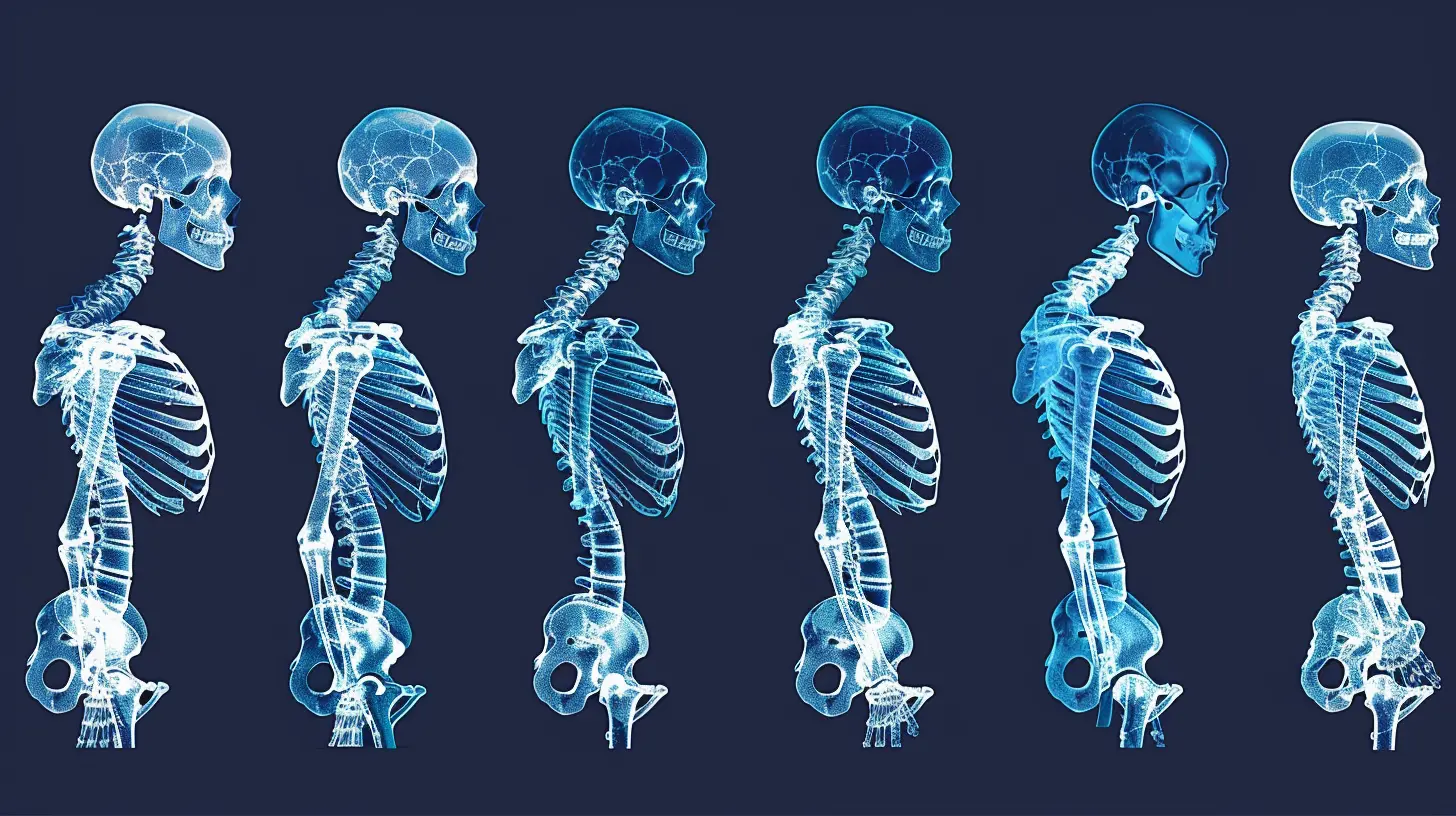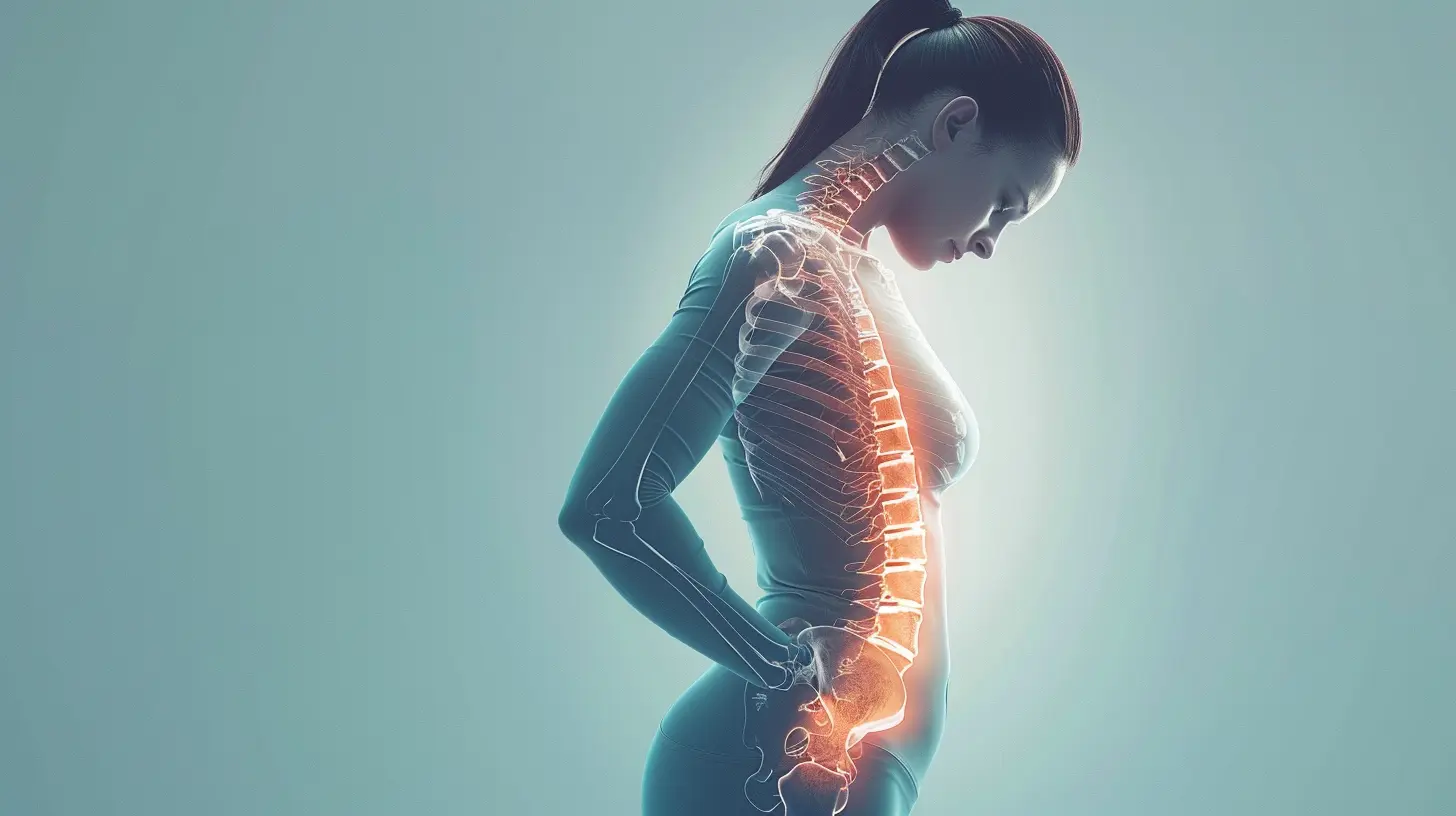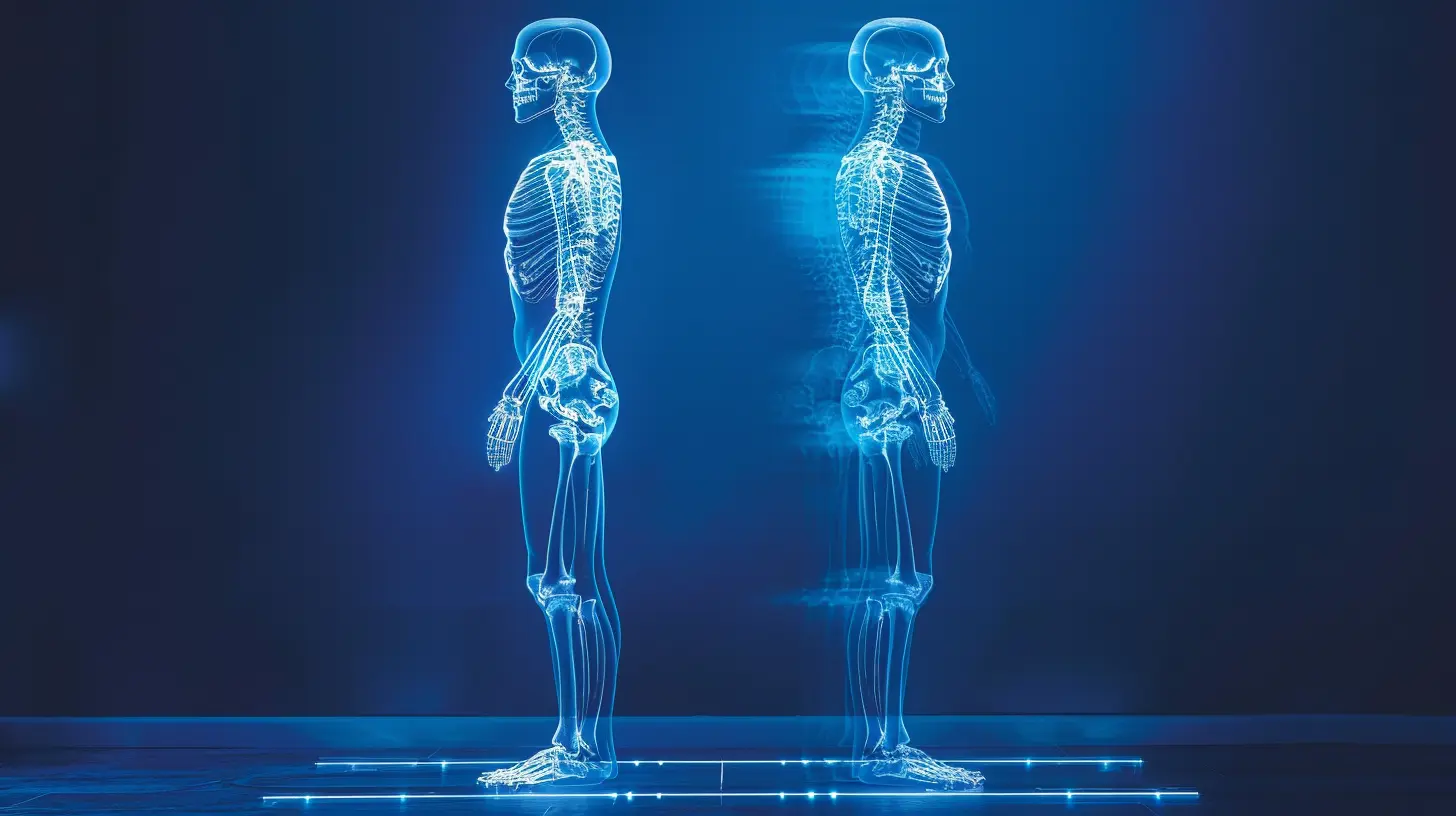Proper Posture and Bone Health: Are You Standing Right?
19 December 2024
Have you ever caught yourself slouching over your computer or craning your neck down at your phone for hours? You're not alone. Most of us are guilty of bad posture at some point during the day, often without even realizing it. But did you know that poor posture doesn’t just make you look tired or unconfident—it can also wreak havoc on your bone health? Yep, your mom wasn’t just nagging when she told you to "stand up straight."
In this article, we’ll dive into why posture is so vital for your bone health, the risks of neglecting it, and simple yet effective tips to fix your posture. Ready to stand tall? Let’s get to it.
Why Proper Posture Matters
So, what’s the big deal with posture anyway? It’s just how you stand or sit, right? Well, not quite. Posture is more than just about looking poised or professional. It’s about how you align your body—your bones, muscles, ligaments, and tendons—for optimal function.When your posture is on point, your bones and joints are properly aligned, which means your muscles can work efficiently. It reduces the strain on your spine and helps prevent fatigue, pain, and even long-term damage. Plus, good posture improves balance, reduces your risk of falls, and lets you breathe and move freely.
On the flip side, bad posture can cause all sorts of problems—from chronic back pain to issues with your hips, knees, and even your digestion. In short, it’s like the saying goes: “As the twig is bent, so grows the tree.” Your body needs a solid foundation.
The Connection Between Posture and Bone Health
What Happens When You Slouch?
When you slouch or maintain poor posture for extended periods, you’re essentially putting stress on your bones and joints. Your body compensates by shifting the load to areas that aren't equipped to handle it. Over time, this can lead to conditions like:- Osteoarthritis: The wear-and-tear type of arthritis that happens when the cushioning in your joints wears away.
- Kyphosis: A forward rounding of the upper back, often caused by years of hunching over.
- Compression Fractures: Common in people with osteoporosis, these tiny fractures in the spine can worsen posture issues.
- Degenerative Disc Disease: When the spinal discs start to break down due to chronic stress.
Scary, right? But don’t panic yet! The good news is that your bones are dynamic. They constantly rebuild and adapt, especially when you treat them with care.
Bone Remodeling and Posture
Your bones are like a construction site, always under renovation. The process is called bone remodeling, and it’s influenced by your posture. Standing or sitting properly distributes weight evenly across your skeletal system. This helps maintain bone density and prevents unnecessary wear and tear. Think of it like a sturdy house—if the foundation starts to crack, the whole house can become unstable. Your bones are no different.
Signs That Your Posture May Need Help
Curious if your posture is up to par? Here are some telltale signs that it might need a little TLC:1. Rounded Shoulders: Your shoulders roll forward like you’re curling into a ball.
2. Text Neck: A fun term for when your head juts forward from looking at your phone or laptop.
3. Pain or Stiffness: Especially in your lower back, neck, or shoulders.
4. Uneven Hips: One hip sitting higher than the other can mean you’re compensating for a posture imbalance.
5. Fatigue: Feeling drained even after sitting or standing for short periods? This could be from the extra energy your body uses to counteract bad posture.
If you’re nodding along in regret (or just realized you’re slouching while reading this), don’t worry—it’s fixable.
Quick Fixes for Better Posture
Improving your posture doesn’t mean you need to walk around perfectly rigid like a soldier. Instead, aim for a relaxed but upright alignment. Here are some practical tips you can start using today:1. Mind Your Desk Setup
Do you work at a desk? Make sure your chair, desk, and computer are set up to support good posture. Keep your screen at eye level, feet flat on the floor, and elbows at a 90-degree angle. A chair with lumbar support is a game-changer.2. Strengthen Your Core
Your core muscles play a huge role in keeping your body upright. Exercises like planks, bridges, and yoga poses can help build the strength you need to maintain good posture effortlessly.3. Check Yourself Regularly
Every hour or so, check in with your posture. Are you slouching? Are your shoulders relaxed and down, or are they hunched up near your ears? A mental nudge can go a long way in building better habits.4. Stretch It Out
If you spend a lot of time sitting, stretch regularly. Focus on movements that open up the chest and shoulders, like cat-cow stretches or the "doorway stretch."5. Use Technology Wisely
Your phone isn’t your enemy, but how you use it might be. Hold it at eye level instead of craning your neck downward. There are even apps that remind you to look up and take breaks.6. Wear Supportive Shoes
Believe it or not, your footwear affects how you stand. High heels or unsupportive shoes can tilt your pelvis and throw your whole alignment off. Stick to shoes that provide proper support.Long-Term Benefits of Good Posture
The benefits of good posture go way beyond bone health. Once you make it a habit, you’ll likely notice improvements in other areas of your life:- Reduced Chronic Pain: Less strain on your back, neck, and other joints.
- Better Breathing: Proper posture opens up your chest, giving your lungs more room to expand.
- Increased Confidence: Standing tall doesn’t just make you look more confident—it actually makes you feel more confident!
- Improved Digestion: Believe it or not, slouching can compress your stomach and slow down digestion; standing tall keeps things moving smoothly.
- Boosted Energy: Less strain on your body means less fatigue, giving you more energy for the things you love.
Common Posture Myths (Debunked)
Myth 1: Good Posture Means Standing Up Straight All the Time
Wrong. Good posture is about alignment, not stiffness. You should feel relaxed, not like a robot.Myth 2: Posture Doesn’t Change in Adulthood
False. While posture habits start young, it’s never too late to improve. Your body is adaptable at any age.Myth 3: You Need Expensive Gadgets to Fix Posture
Nope! While posture-correcting gadgets can help, you don’t need them. Awareness, exercise, and some ergonomic adjustments are often enough.Takeaways: Are You Standing Right?
The bottom line? Your posture isn’t just about appearances—it’s a cornerstone of your overall health, especially when it comes to your bones. The way you stand, sit, and move impacts everything from your joint health to your risk of age-related bone issues. The best part? It’s never too late to fix it.Start by being mindful of your posture and incorporating small changes into your daily routine. Strengthen your core, stretch often, and create an ergonomic workspace. With practice, you can retrain your body and feel the difference—less pain, more energy, and, let’s be honest, you’ll look pretty sharp too.
So, are you standing right? If not, let today be the day you start. Your future self will thank you!
all images in this post were generated using AI tools
Category:
Healthy BonesAuthor:

Laura Hudson
Discussion
rate this article
13 comments
Lulu Brown
Great insight! Proper posture is crucial for bone health. Thank you for highlighting this important topic!
February 4, 2025 at 3:23 AM

Laura Hudson
Thank you for your feedback! I'm glad you found the topic important. Proper posture truly makes a difference in bone health!
Holly Acevedo
Great insights! Posture truly impacts overall bone health.
January 29, 2025 at 4:19 PM

Laura Hudson
Thank you! I'm glad you found the insights valuable—proper posture is indeed crucial for maintaining strong bones.
Luma McGeehan
Oh, absolutely! Let’s all just stand perfectly straight while balancing a book on our heads and practicing deep breathing. Because who needs to enjoy life when we can obsess over our posture? Remember, nothing says “healthy” like rigidly aligning your spine in a world full of slouches! #PostureGoals
January 24, 2025 at 4:13 PM

Laura Hudson
While balance and mindfulness matter, good posture truly supports overall health—let's find a fun way to enjoy it!
Angela Duffy
Great article! It’s amazing how something as simple as posture can make such a big difference in our overall bone health. Thanks!
January 22, 2025 at 5:45 PM

Laura Hudson
Thank you for your kind words! I'm glad you found the article helpful. Proper posture truly plays a vital role in maintaining bone health!
Fletcher McDonough
Thank you for this vital reminder—posture matters!
January 20, 2025 at 5:43 AM

Laura Hudson
You're welcome! I'm glad you found it helpful. Proper posture is indeed crucial for our overall health!
Azurael McCallum
Maintaining proper posture is essential for bone health. Poor alignment can lead to musculoskeletal issues and long-term damage. Regularly checking your posture, especially during prolonged sitting or standing, can significantly enhance spine integrity and support overall wellness. Prioritize good posture for a healthier future.
January 12, 2025 at 5:11 PM

Laura Hudson
Thank you for highlighting the importance of posture! Regularly checking and correcting our alignment is indeed vital for maintaining bone health and preventing musculoskeletal issues.
Sierra McCracken
Standing tall isn’t just a fashion statement; it’s a bone’s best friend! So straighten up, or risk being a hunchback in your own story. Your spine deserves a standing ovation!
January 5, 2025 at 4:17 AM

Laura Hudson
Thank you for your wonderful comment! Standing tall truly benefits both posture and bone health. Let’s prioritize our spine!
Alyssa Holland
Great article! Standing tall isn’t just about looking confident; it’s a key to strong bones and better health! Let’s embrace good posture for a vibrant, pain-free life. Here’s to standing right and feeling bright! 🌟🦴
December 30, 2024 at 4:57 AM

Laura Hudson
Thank you! I'm glad you enjoyed the article. Embracing good posture truly contributes to overall health and well-being! 🌟
Piper Wright
Maintaining proper posture is not just about aesthetics; it's a profound commitment to our bone health. Every alignment we embrace echoes in our long-term vitality, shaping our body's resilience.
December 27, 2024 at 5:33 AM

Laura Hudson
Absolutely! Proper posture is essential for bone health and overall resilience, influencing our vitality for years to come. Thank you for highlighting this important connection!
Selena Lewis
Improving posture today boosts bone health for tomorrow!
December 24, 2024 at 4:30 PM

Laura Hudson
Absolutely! Good posture today not only enhances immediate comfort but also plays a crucial role in maintaining strong bones for the future.
Josie Banks
Maintaining proper posture is essential for bone health, reducing strain and preventing long-term musculoskeletal issues effectively.
December 23, 2024 at 3:59 AM

Laura Hudson
Thank you for highlighting the importance of posture! Proper alignment is indeed crucial for overall bone health and preventing future musculoskeletal problems.
Jane McAndrews
This article raises intriguing points about the connection between posture and bone health! I'm curious about how small changes in our daily habits can significantly impact our skeletal framework. Are there specific exercises or stretches recommended for maintaining proper posture? I'd love to explore practical tips for better bone health!
December 21, 2024 at 5:56 AM

Laura Hudson
Thank you for your interest! Simple exercises like planks, shoulder rolls, and chest stretches can enhance posture and support bone health. Regular movement and mindfulness about your posture throughout the day can also make a big difference.
Farrah Rodriguez
Maintaining proper posture is crucial for bone health. It helps distribute weight evenly, reduces strain on muscles and ligaments, and minimizes the risk of injury. Prioritize good posture for long-term wellness.
December 19, 2024 at 5:34 PM

Laura Hudson
Thank you for emphasizing the importance of posture! It truly plays a vital role in maintaining bone health and overall well-being.
MORE POSTS

Balancing Cardio and Strength While Exercising Outdoors

Superfood Herb Spotlight: Benefits of Turmeric

Combatting Dehydration While You Sleep

Meditative Walks: Combining Fitness and Mindfulness Outdoors

Hydration Habits for a Healthier Gut

How to Avoid Stretch Marks During Pregnancy

Fueling an Active Lifestyle: The Best Breakfasts for Athletes

The Role of Protein in Muscle Repair and Strength Building

How to Make Your Favorite Breakfast Classics Healthier